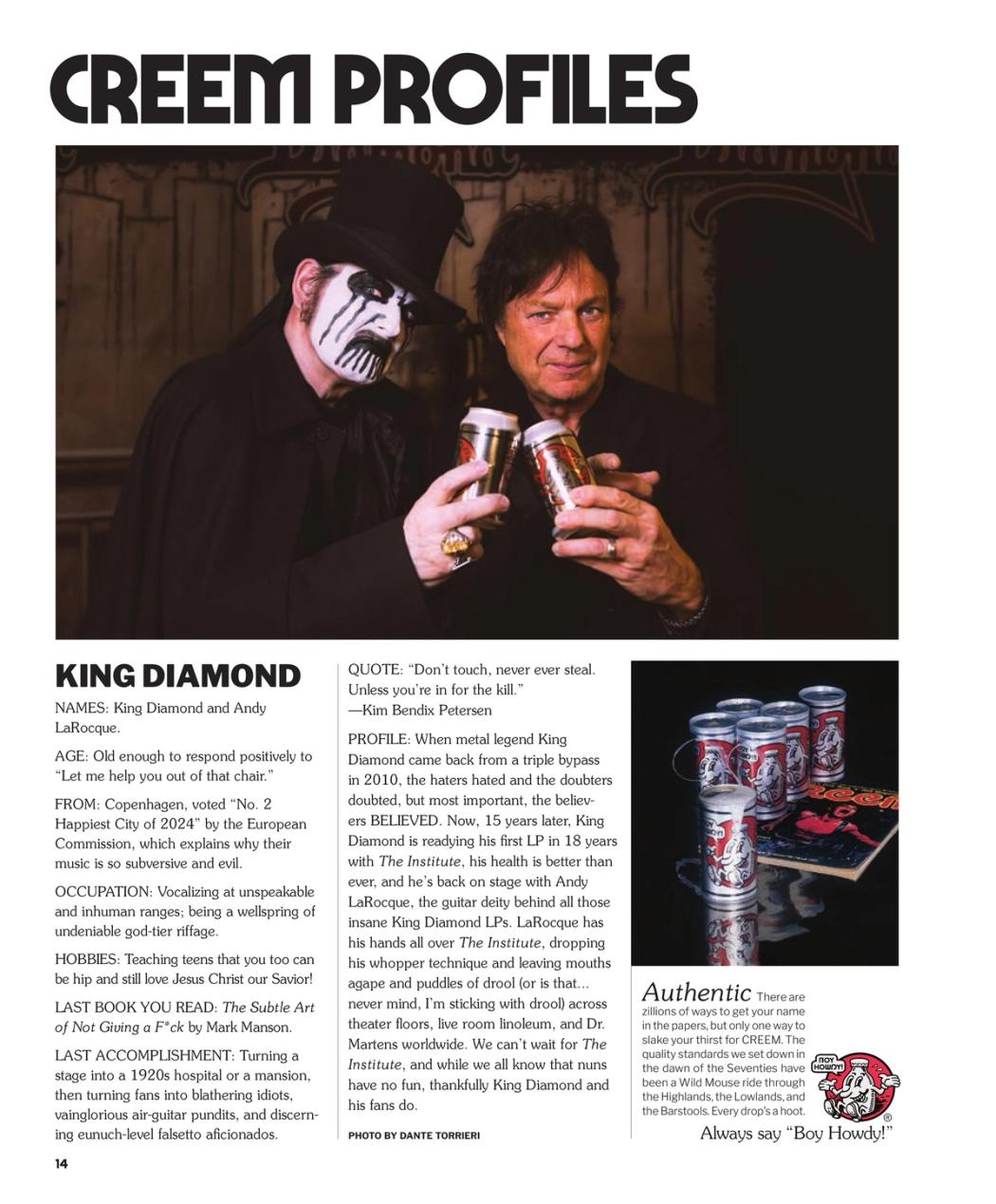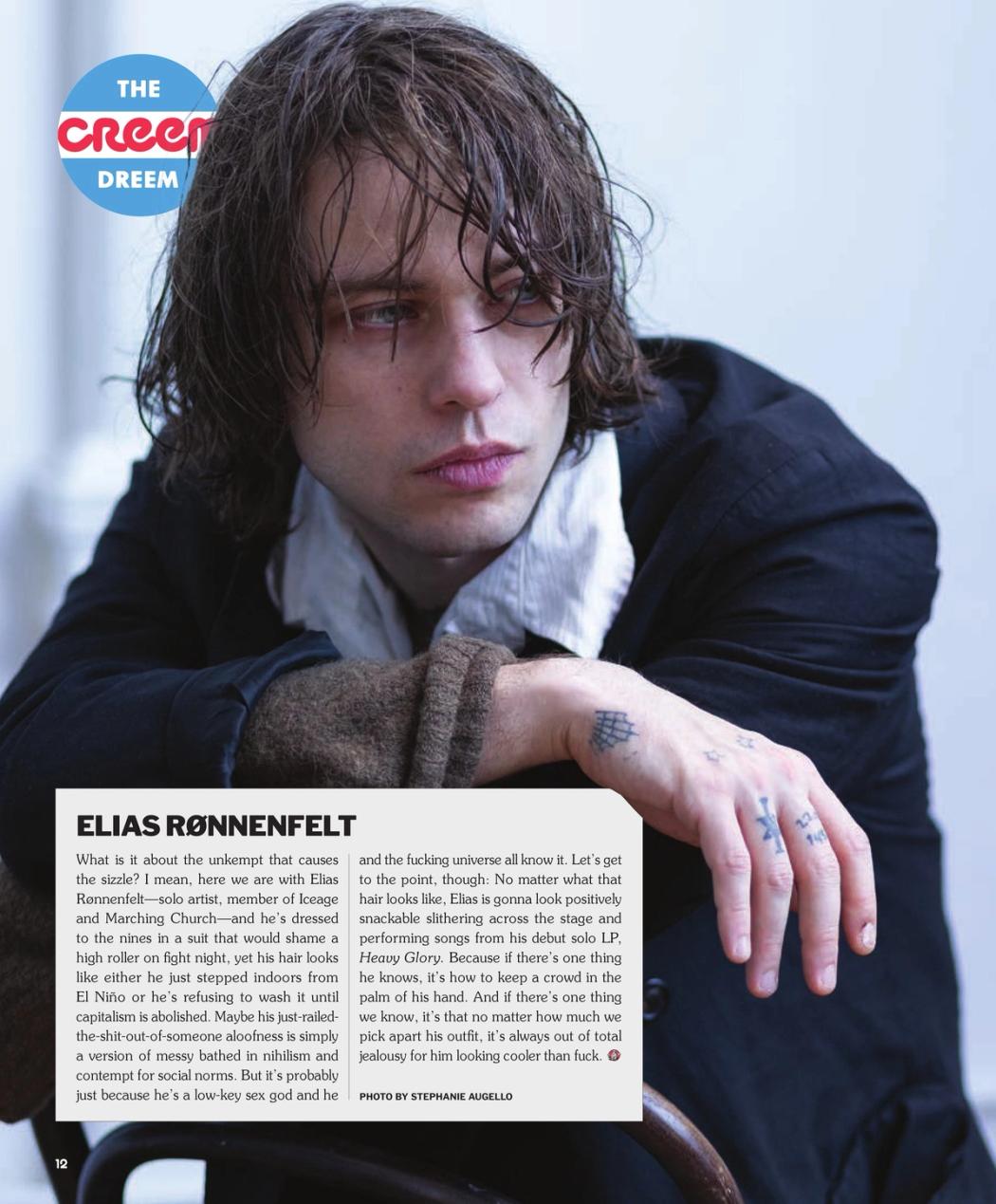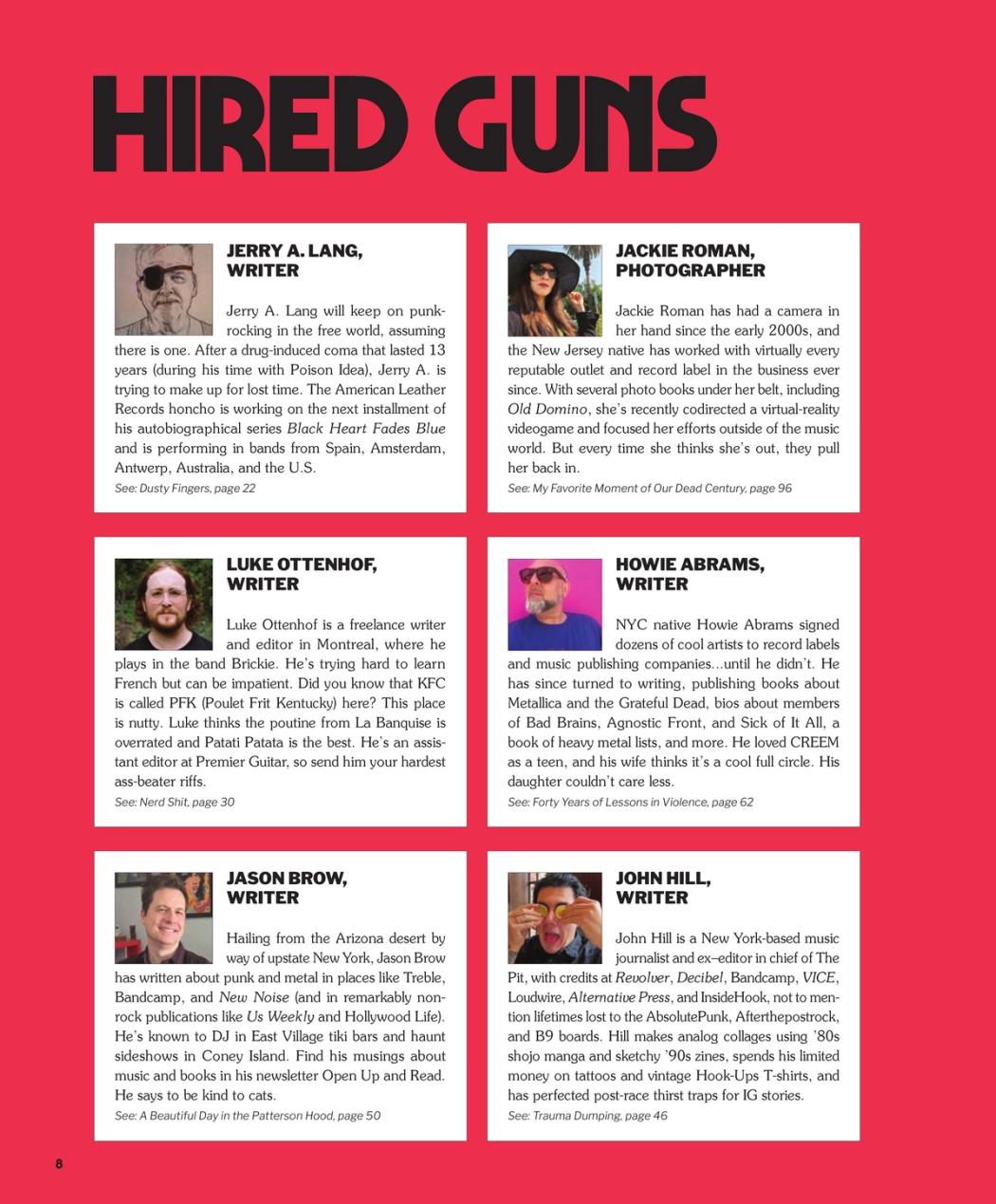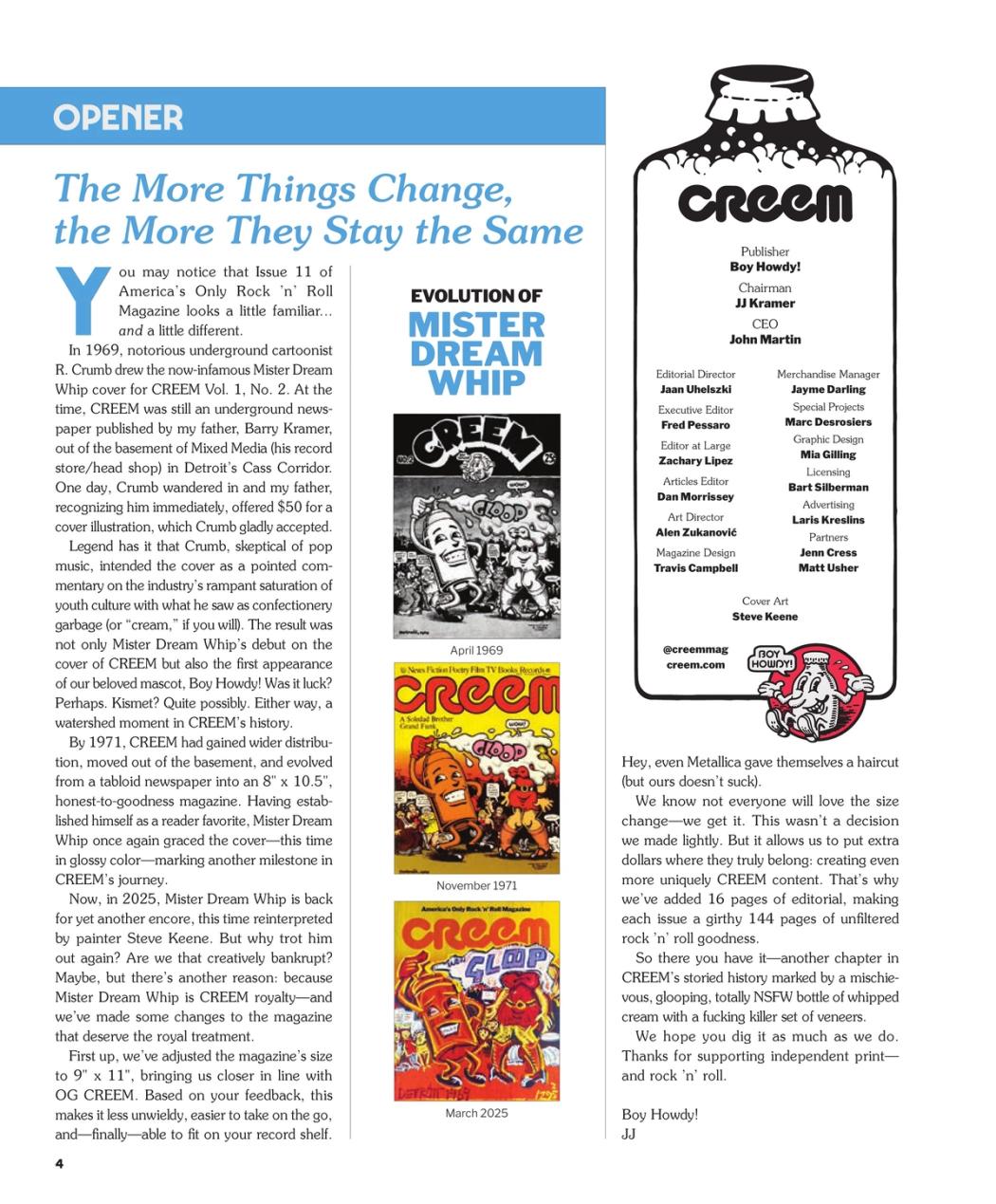MAEL BONDING
A day and my life with Sparks

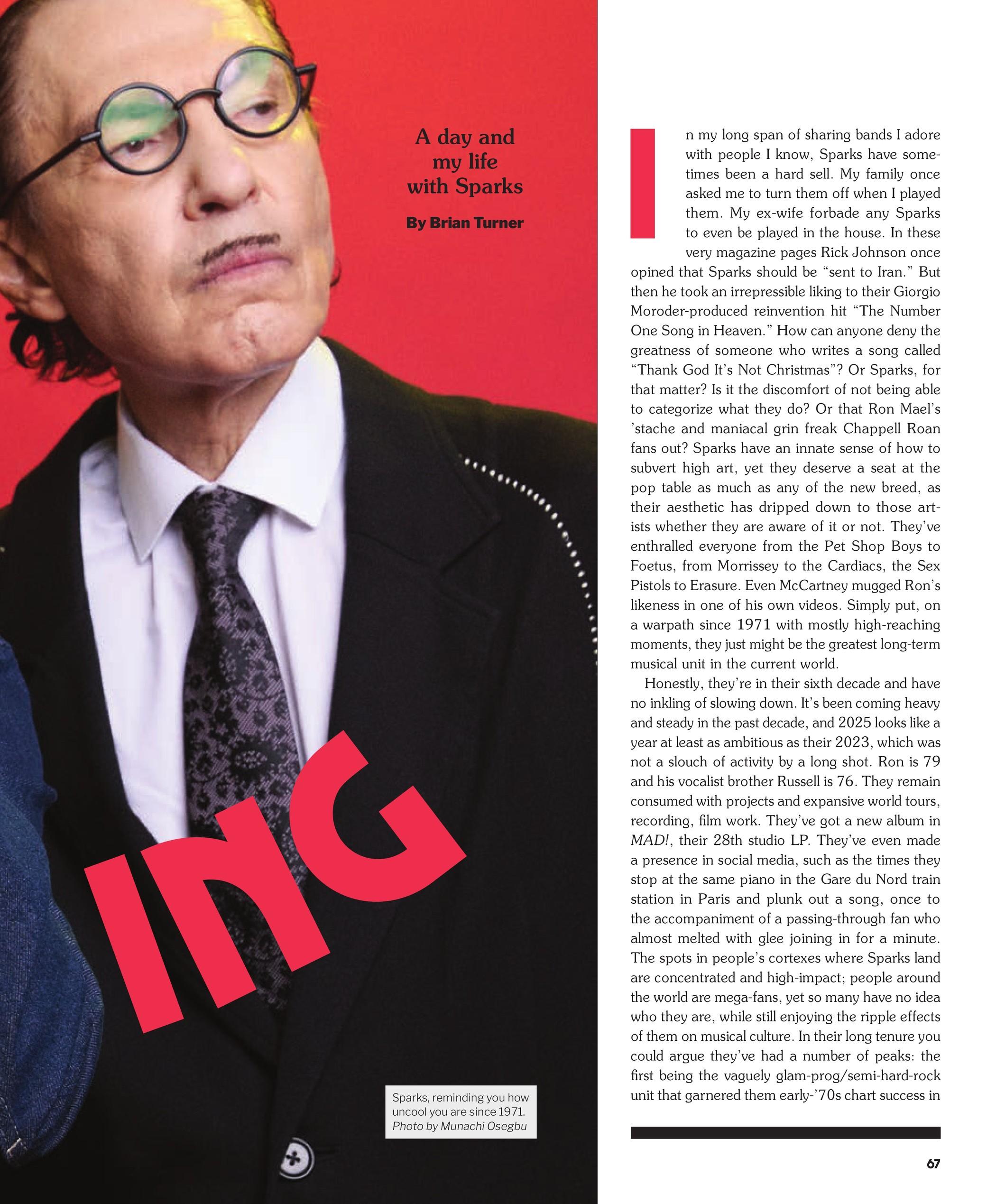
In my long span of sharing bands I adore with people I know, Sparks have sometimes been a hard sell. My family once asked me to turn them off when I played them. My ex-wife forbade any Sparks to even be played in the house. In these very magazine pages Rick Johnson once opined that Sparks should be "sent to Iran." But then he took an irrepressible liking to their Giorgio Moroder-produced reinvention hit “The Number One Song in Heaven.” How can anyone deny the greatness of someone who writes a song called “Thank God It’s Not Christmas”? Or Sparks, for that matter? Is it the discomfort of not being able to categorize what they do? Or that Ron Mael’s ’stache and maniacal grin freak Chappell Roan fans out? Sparks have an innate sense of how to subvert high art, yet they deserve a seat at the pop table as much as any of the new breed, as their aesthetic has dripped down to those artists whether they are aware of it or not. They’ve enthralled everyone from the Pet Shop Boys to Foetus, from Morrissey to the Cardiacs, the Sex Pistols to Erasure. Even McCartney mugged Ron’s likeness in one of his own videos. Simply put, on a warpath since 1971 with mostly high-reaching moments, they just might be the greatest long-term musical unit in the current world.
Honestly, they’re in their sixth decade and have no inkling of slowing down. It’s been coming heavy and steady in the past decade, and 2025 looks like a year at least as ambitious as their 2023, which was not a slouch of activity by a long shot. Ron is 79 and his vocalist brother Russell is 76. They remain consumed with projects and expansive world tours, recording, film work. They’ve got a new album in MAD!, their 28th studio LP. They’ve even made a presence in social media, such as the times they stop at the same piano in the Gare du Nord train station in Paris and plunk out a song, once to the accompaniment of a passing-through fan who almost melted with glee joining in for a minute. The spots in people’s cortexes where Sparks land are concentrated and high-impact; people around the world are mega-fans, yet so many have no idea who they are, while still enjoying the ripple effects of them on musical culture. In their long tenure you could argue they’ve had a number of peaks: the first being the vaguely glam-prog/semi-hard-rock unit that garnered them early-’70s chart success in the U.K. and some Don Kirshner TV time, with a slight dalliance with the burgeoning corporatized FM market.


